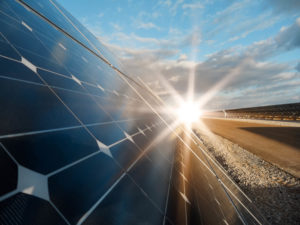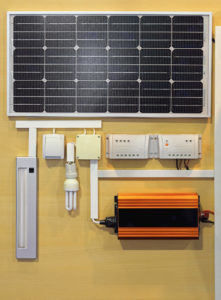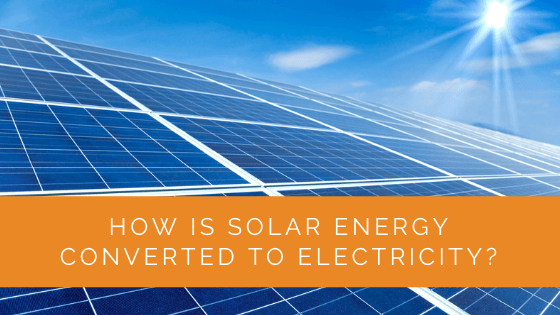Ever noticed how bright the sun is? Along with brightening up our beautiful planet, it can power it up too! The sun generates around 173 trillion terawatts of solar energy, much more than what the world consumes. In fact, the sun can fulfil Earth’s total energy needs within a significantly small period of time if solar power is harnessed effectively.
Solar energy is an excellent renewable energy source and can easily power all your home. To utilize the power of solar energy, you’ll need solar panels to convert it into electricity. The solar cells in these panels convert sunlight into electrical energy for running your appliances.
This post will talk about the solar energy conversion process and related aspects.
Contents
Key Takeaways
- Solar energy, generated by the sun, is a vast and renewable resource that can be harnessed to fulfill Earth’s energy needs without emitting harmful greenhouse gases.
- There are two major categories of solar energy: passive solar energy, which uses solar radiation directly without mechanical devices, and active solar energy, which employs mechanical and electrical components to capture and store solar energy.
- The process of converting solar energy into electricity involves the use of photovoltaic cells, which absorb sunlight, trigger the photovoltaic effect to generate an electric current, convert the direct current (DC) into alternating current (AC) using a solar inverter, and supply electricity to homes and devices, often storing excess energy in solar batteries for nighttime use.
The Importance of Solar Power
You can consider solar power as an unlimited source of energy that the sun has been offering us for ages. The heat and light of the sun provide the planet with energy that can then be converted into other forms of energy and can be used to produce electricity.
Surprisingly, it has been in use since the 3rd century B.C. Back then, in the area that is now known as Germany, people used mirrors to harness solar power to light up their torches.
But why is it so different from other energy sources? It’s because, unlike fossil fuels, natural gas, or coal, solar energy doesn’t emit pollutants such as harmful greenhouse gases. Offering a steady supply of energy, the sun rays don’t have much carbon footprint as well.
Let’s see the two major categories of solar energy.
Passive Solar Energy
Passive solar energy is when you use solar radiation without the application of any devices or solar converters. Being a clean energy source and always available, you can use it directly with ease.
For example, you are drying your clothes using the energy from the sun. Or, there might be windows facing 30 degrees south to let more energy come in and heat up your rooms. You can use the sun’s energy to heat your food and water with the help of a solar heater.
Active Solar Energy
Active solar energy is a type of solar energy uses various mechanical and electrical components to capture the sun’s energy. These systems can have a photovoltaic cell, voltage controllers, pumps, or blowers to process sunlight. Batteries are used to store this energy.
The stored energy from the sun can be used to generate electricity and power your residence. In addition, this form of solar energy is used for solar space heating, water heating, and pool heating.

Conversion of Solar Energy into Electricity
You can use solar energy technologies to sunlight into a renewable energy source. The electricity generated can help charge and power home appliances. To understand all this, you need to see how solar panels work to utilize the sunlight hitting the Earth’s surface.
Step 1: Sunlight Falls on the Solar Panels
The primary components of solar cells are silicon cells, glass, metal frames, and wiring. These solar cells are organized into arrays, enabling the panel to absorb maximum sunlight. However, you must position the solar panel at the best angle for the highest absorption.
These photovoltaic cells will absorb sunlight all day long. But, the size of the solar panel and the number of cells required for maximum absorption will depend on the load rating.
Step 2: The Photovoltaic Effect Takes Place
If you want to know how solar power works, you have to understand the photovoltaic effect. It is the process of converting sunlight into usable energy with the help of photovoltaic technology.
- Every solar cell consists of a thin semiconductor layer which usually has two silicon layers within. Both the leaders are positively and negatively charged, forming an electric field between them.
- So, the sun rays fall on a solar cell, which energizes the electrons within the silicon cells, forcing them to detach from the atoms.
- Now, the electric field sets these lose electrons into a motion that generates an electric current within the semiconductor layer.
Step 3: Conversion of DC to AC
The electricity generated by the solar panels is in the form of direct current. But this form of electric current is used for residences or electrical devices, as the current can damage them. That’s why your solar power system converts this into alternating current for convenient usage.
This conversion of DC electricity to AC is done by a solar inverter. Device change is the direct current’s direction so fast that it becomes alternating current (AC). In addition, inverters have excellent features like high conversion efficiency and switching frequency to get the job done fast.
Step 4: Your Home is Powered using solar cells
After the successful creation of usable electricity, the solar inverter will transfer the energy into your electric box. Then, electricity is passed onto your entire house and two devices through the wires. Just like a traditional power grid, you get an uninterrupted power supply from solar panels.
If there are any power shortages, you can always pull electricity from the power grid.
All the energy is primarily stored in your solar batteries. In addition, the solar charge controller regulates the current’s voltage and keeps the battery charged. So, when it’s night time, your batteries can effectively provide you electricity.

Tips to Get The Most Out of Solar Energy
Here are some tips to maximize your solar energy usage –
- Use appliances like washing machines or microwaves during the day to make use of Daylight hours
- Try to charge all devices like smartphones and laptops using solar energy during the day
- Install monitoring systems for mobile applications to track your power consumption
- Save energy by switching off bulbs and appliances when not required
- Keep your solar panels clean for maximum absorption
Expert Insights From Our Solar Panel Installers About How Solar Energy is Converted to Electricity
Having installed numerous solar panels, I can attest to the efficiency of photovoltaic cells. These cells are the heart of solar energy systems, converting sunlight directly into electricity through the photovoltaic effect. With the right setup, they can power entire homes and significantly reduce energy bills.
Senior Solar Technician
One critical component in the conversion process is the solar inverter. This device ensures that the direct current (DC) generated by solar panels is converted into alternating current (AC), which is safe for household appliances. High-quality inverters with high conversion efficiency are essential for maximizing energy usage.
Renewable Energy Consultant
Solar batteries play a crucial role in storing excess energy generated during the day. This stored energy can be used at night or during cloudy days, providing a reliable power supply and ensuring that you make the most out of your solar investment.
Lead Solar Engineer
Experience Solar Excellence with Us!
Trust in Solar Panels Network USA, where our seasoned experts deliver top-quality solar solutions for homes and businesses nationwide. With a legacy of countless successful installations and a commitment to sustainable energy, we’re your reliable partner in the solar journey. Ready for a brighter, eco-friendly future? Call us now at (855) 427-0058 and harness the power of the sun!
Wrap Up
The potential of solar energy as a renewable and eco-friendly power source is undeniable. From its historical usage to modern technological advancements, solar energy is a sustainable alternative to traditional energy sources. We can significantly reduce our carbon footprint and reliance on non-renewable resources by harnessing the sun’s abundant energy through passive and active solar technologies. Converting solar energy into electricity is fascinating and practical, offering a viable solution for powering our homes and businesses. Solar energy can be an efficient and reliable power source with the right approach, such as optimal panel placement and regular maintenance. As we continue to explore and improve solar technologies, it becomes increasingly clear that solar energy is not just a part of our past but a critical component of a sustainable future
About the Author
Solar Panels Network USA stands at the forefront of solar energy solutions, driven by a team of seasoned solar engineers and energy consultants. With over decades of experience in delivering high-quality solar installations and maintenance, we are committed to promoting sustainable energy through customer-centric, tailored solutions. Our articles reflect this commitment, crafted collaboratively by experts to provide accurate, up-to-date insights into solar technology, ensuring our readers are well-informed and empowered in their solar energy decisions.

